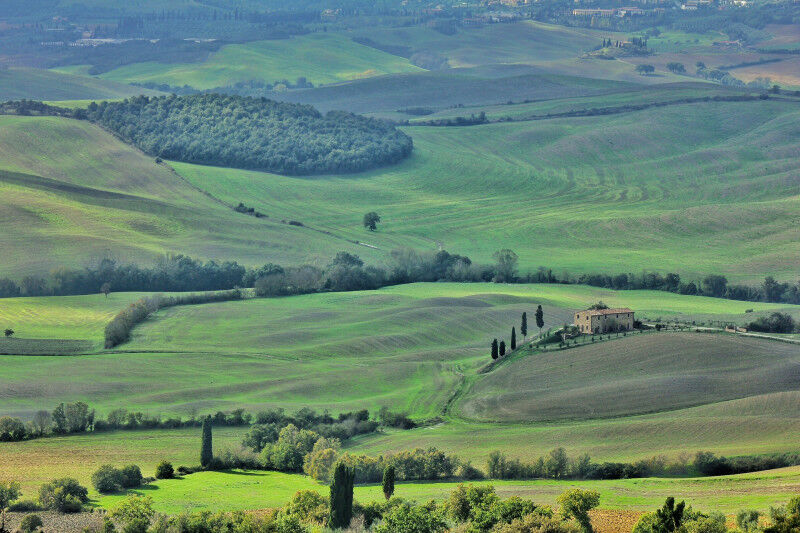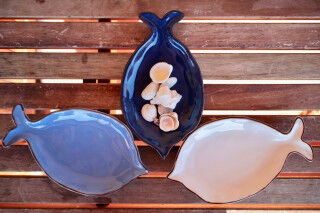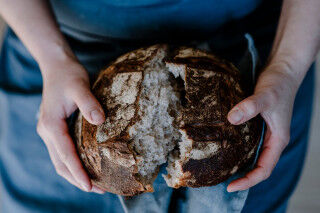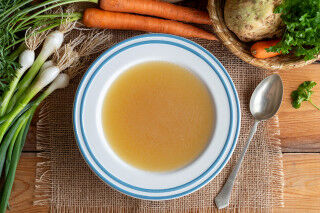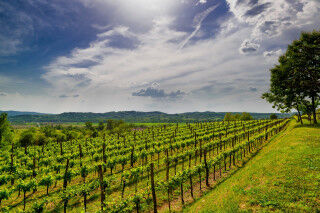'... two terms of enchantment that weave embracing impressions of somnolent walled towns guarding hilltops under the moody Mediterranean sun; of rolling vineyards, and silvery, shimmering, olive groves; of great, cool umbrella pines shading old roads, and tall cypresses marching along horizon ridges; of majestic palaces and hymns-in-stone cathedrals; of vast treasuries of masterworks in paint, stone and bronze; of simple, tasty, healthful, low-cholesterol, tangy-fresh food; of sylvan mountains, and beaches both sandy and rocky -- and, permeating it all, of silent, inescapable echoes of Etruria, Rome, the Middle Ages and the Renaissance. ‘
So much has been written about Umbria and Tuscany throughout the past five centuries that we can only offer you a humble, light-hearted sketch of some things not to overlook while here.
General statistics:
The modern region of Tuscany (Regione Toscana) aligns with the old Grand Duchy (Grand Ducato di Toscana) as it was up to its absorption into newly-created Kingdom of Italy in 1860.
Total area is 22,900 km2 (cfr.: Wales 20,700, Holland 33,400, Massachusetts 21,400), current population about 3.5 million.
Umbria was a province of the Papal States until the states were absorbed into the Kingdom of Italy in 1871.
Total area is 8,450 km2 (cfr.: Northern Ireland 13,450, Delaware 5,350), current population about 800,000.
The cities:
The fabulous Tuscan epicenters are Florence, Lucca, Siena and Arezzo, and Perugia, Assisi, Spoleto and Orvieto are the lovely centers of Umbria. Entire libraries are filled with guide books devoted to these renowned cities’ top sites, sounds, flavors and pageantry, and no brief summary can even scratch the surface. Fortunately, nowadays most of the guide books for these cities are excellent resources -- look for the copyright date and chose one written recently.
All historical city centers are pedestrian zones -- remember while strolling through the centers that by now many of the world's city streets look the same at eye level...same window displays, same lighting, much of the same wares on offer.
We suggest looking up from the street level, at the kaleidoscope of architectural themes and variations on view from over ten centuries of city life. These sites will please, amuse and/or irritate your eyes, if you know how to experience them. Explore off-the-main-drag side streets and alleys, where you'll often find good trattorie -- small unpretentious restaurants -- with savory fare and good local wines at reasonable prices.
Centrally located in Tuscany, Lucca is a wonderful experience (also doable as a day-trip from Florence) thanks to its delightful townscape and features, it is the most livable, orderly, enjoyable city you could ever wish to be in. By all means, see it with a guide to help you explore some off-the-beaten paths and get some insider perspective!
Arezzo features many similar qualities to Lucca, but is larger, more bustling and noisier, and, being built on a steep hill, a bit harder for a walking exploration.
Siena is the one of the absolute gems of all Italian medieval cities, a wonder of preservation and livableness -- easily worth two days' stay. All are unmistakably Tuscan in character and speech, with a Tuscan vibe joyfully expressed in their cuisine, including wines and precious local olive oils.
Umbria's Perugia will keep you amazed and engaged for as long as you'd like to stay.
Assisi is overwhelmingly constructed by the Basilica of Saint Francis, with the classic elements of a small medieval city on the sidelines. The lovely town of Spoleto has much of the same ancient feel, but minus the basilica or the feel of Saint Francis throughout the city.
The facade of Orvieto's cathedral (in Italian, the Duomo), will send shivers of delight and awe down your spine, particularly when enjoyed in the light of the afternoon sun.
These communities are unmistakably Umbrian in personality, architecture, speech (Umbrian dialects are all very different from Tuscany’s local languages) and in the cucina, which is more elaborate than Tuscan cuisine given its closer proximity to Rome. The region enjoys many culinary specialties, including pastries, unknown in neighboring Tuscany.
In exploring both region’s lovely small towns, you'll find that many are very handsome, sometimes stunningly so, small ancient cities that are timeless in soul and fabric. All are marked with the same medieval stamp making them spartan, rugged, severe, with veins of tragedy counterbalanced by occasional flamboyance, but never superficial or overly bustling.
In Tuscany Romanesque and Renaissance run the roost, with side of Gothic, with a complete absence of Baroque or Rococo styles (with just a few exceptions). Umbria follows a very similar pattern, although few Umbrian arts ever reached Tuscan levels of quality and quantity.
Given its typical clement weather, it would be an unfortunate (and thankfully, atypical) visitor indeed who could leave Tuscany or Umbria without cherishing the tumbling patchwork of panoramas that can warm the hearts of visitors, prod the curiosity of out-of-towners and rejuvenate the spirits of anyone feeling a bit blue. Few lands blend man's intrusions so successfully, so symbiotically and aesthetically, with an amenable, amiable and bountiful earth. Torquato Tasso, who wasn't Tuscan, believed Tuscany might be the earthly paradise. But such rewards aren’t always to be had from air-conditioned cars on highways. Excursions onto small back-roads are advised -- windows down, fresh air breezing through the windows -- and once a suitable parking spot has been found, a well-earned walk to explore the area.
Well-planned walking maps are available for every region, many of them chosen to meet special interests, (rural architecture, agriculture, horticulture, history, crafts and artisanship, etc). We'll gladly help in any way we can to make your visit memorable.
